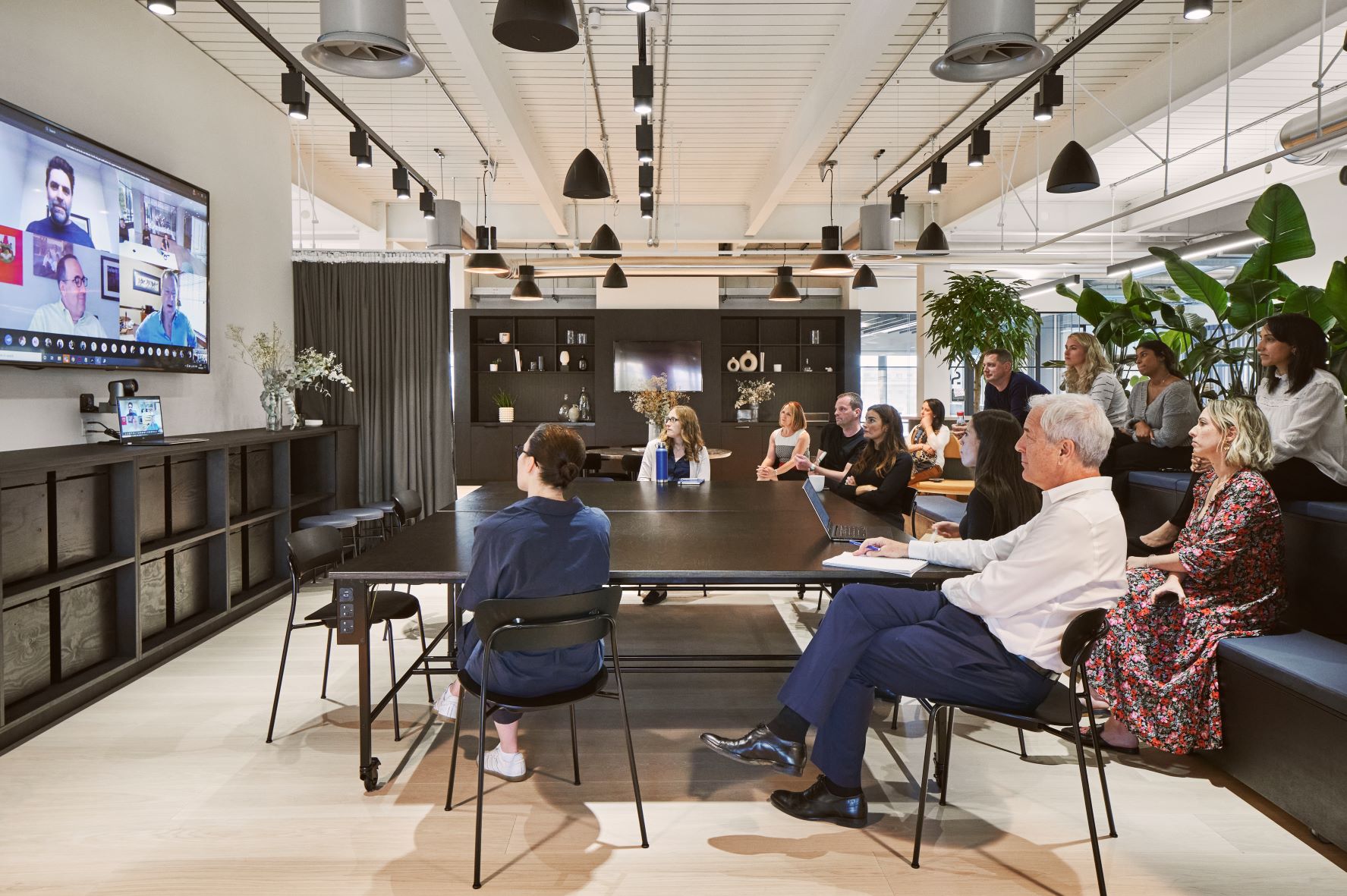Three years ago, our workforces were thrown into a world which no one could have predicted or planned for. Overnight, offices emptied and staff began to work from home – for the foreseeable future. Much has changed since then, including new habits and ways of working.
In today’s environment, HR and business leaders face new and constantly evolving challenges, including reconnecting staff with the office once again in order to encourage more people back into the workplace, a task which is proving difficult for some. We have seen a number of organisations mandating a minimum number of days in the office, while on the other side of the table, many employees are pushing back and showing signs of reluctance to be back in the office.
In fact, research suggests that a large proportion of the workforce would be willing to move jobs if they are forced to physically return. According to a recent poll* over a third of UK employees would quit if they were told to return to the office full-time.
This reluctance may be partly influenced by the general new habits that have been formed over the last few years, but other factors are also at play. The study of 3,000 office workers across Europe (The Reluctant Returner) revealed that the vast majority (95%) of staff would make physical improvements to their office in some way. With just 5% of employees happy with how their workspace is currently set up, this reluctance to head back into the office is seemingly not just a case of people wanting to work remotely, but rather also simply not getting what they need from the space itself.
A growing divide
Before the pandemic, the role the office played in talent attraction and retention was very different to what it is today. Fun spaces such as Google’s headquarters stood out from the crowd for some generations, while others who had spent their entire professional lives sat at a desk in the office were more accepting that the workplace was a necessary part of the job.
Now, employees see it as more than a place to work – after all, many have proven that they can work from anywhere. Never before have workforces questioned the purpose of the office on this scale, but as they do, they are recognising that their individual wants and needs are perhaps different to what their employers thinks is required.
It is all too easy to assume what employees want, but as our Reluctant Returner research highlighted, there is a disconnect between staff and businesses in terms of office needs. In fact, our research showed that employers felt there was greater resistance to returning to the office than actually existed in their workforce (72% versus 64%). And while employers indicated that flexible working hours was their top initiative to encourage people back into the office, staff ranked lunch provisions higher.
So, what do people want from the workplace? The answer will vary from business to business as every workforce has its own uniqueness. However, our study suggests that separate spaces for collaborative and individual work are a basic must, with 74% of employees indicating this change to the workspace would make a return more appealing for them.
Access to more amenities and outdoor spaces were also highlighted as elements of the office that staff want to see change. This is intrinsically linked to the benefits that people experience while working from home and further highlights the need to set up the office to mimic the many comforts of home staff have grown accustomed to.
Perhaps more importantly, the physical workspaces within the office need to be flexible. Spaces need to accommodate the differing needs of various teams at different times. They need to be able to change so they don’t feel crowded when at full capacity or empty when fewer people are in. Employees need to be able to have private conversations without the distraction of background conversations while also connect with one another with ease when required. Create a space that can adapt to the ever-evolving needs of the workforce and more staff will want to return to the office for fear of missing out.
The need for change
Reports of employee backlash against firms that have made a U-Turn on remote working practises are growing in number, however for employers there is a real business case for wanting people back in the office. Aside from a desire to utilise real estate effectively, there is also a correlation between the office and skills development.
In-person water cooler moments, over-hearing conversations with others and spontaneous brainstorms are all natural learning moments that are almost impossible to replicate in a virtual world. Rigid online training can work in some scenarios and for some individuals, but quite often the ability to learn from peers has more of an impact on employee development.
In a recent study we issued with not-for-profit corporate real estate association, CoreNet Global, we found that the majority (71%) of global leaders believed that staff are better able to learn when they are near others. The ability to provide effective training is also influenced by people being in the same room physically, with 90% of those surveyed highlighting that their firm is more confident delivering mentorship programmes in the office.
This is more noticeable and even desirable when we look at the emerging generation of the workforce who, perhaps unsurprisingly, are eager to learn from their senior colleagues. In our Reluctant Returner research report, we found that, despite being digital natives, Generation Z struggles to connect with peers in a virtual landscape, with 81% revealing they felt disconnected to other staff while working remotely. With 80% of those in the younger age demographic stating that access to in-person training would encourage them back to the office, there is certainly a need to encourage employees of all levels into the workplace.
Building for the future
There is clearly a disconnect between employers and the workforce that is still hanging over our heads since lockdown restrictions were lifted. It is entirely understandable that businesses want to not only make use of the office footprint they have already invested in, but also encourage staff to once again work in person together for the benefit of employee development and retention.
However, given the difficulties that remain prevalent in the UK skills landscape, employers can ill afford to damage relationships with staff by mandating returns and losing talent as a result. A balance needs to be struck, but before that can happen, greater clarity around what is truly keeping people away from the workplace is needed. Only once this has been identified can truly impactful solutions be developed.
The workforce needs to be shown what they are missing by not being in the office and a natural desire to leave their home comforts behind for the better facilities of the workplace needs to be nurtured. Without this authentic attraction, the disconnect between staff and the business will only grow.
*Research by LinkedIn









